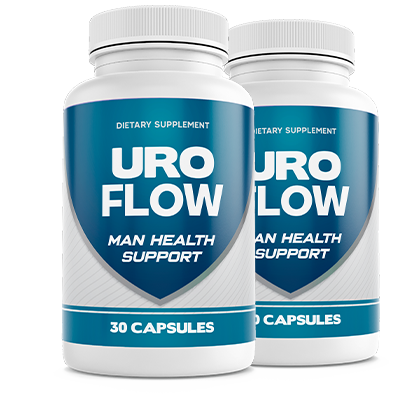What Is Uroflow (Uroflowmetry)?
Uroflow, or uroflowmetry, is a non-invasive diagnostic test designed to measure the speed, pattern, and total volume of urine flow. It’s one of the most widely used tools by urologists to understand how well a patient’s urinary tract and bladder are functioning. When individuals face issues such as slow urination, frequent bathroom visits, incomplete bladder emptying, or pain during urination, this test can provide valuable insights.
Unlike invasive procedures that may require catheters or anesthesia, the uroflow test is quick, painless, and requires no recovery time. It gives immediate results, making it an ideal first-line diagnostic tool for both men and women.
Why Do Doctors Recommend Uroflowmetry?
Doctors recommend uroflowmetry for multiple reasons:
-
Benign Prostatic Hyperplasia (BPH) – Enlargement of the prostate gland can restrict urine flow.
-
Urinary Tract Obstruction – Blockages caused by stones, tumors, or urethral strictures.
-
Bladder Dysfunction – Weak or overactive bladder muscles may cause leakage or retention.
-
Incontinence – Helps evaluate causes of urine leakage or urgency.
-
Post-surgery Monitoring – Essential after bladder or prostate surgery to check recovery.
-
Pediatric Concerns – Used to assess urinary patterns in children with voiding problems.
Expert Insight:
“Uroflowmetry is a frontline test that gives us real-time data about bladder function without discomfort for the patient. It’s simple, affordable, and can prevent unnecessary advanced testing.” – Dr. Kevin Adams, Urologist, USA
How the Uroflow Test Works
The test involves urinating into a special funnel or container connected to a uroflowmeter. This device automatically measures:
-
Flow Rate (ml/sec) – How quickly urine is expelled.
-
Voided Volume – The total amount of urine passed.
-
Voiding Pattern – Whether the stream is steady, interrupted, or weak.
The machine displays the data as a graph. A healthy individual usually has a bell-shaped flow curve, while flat or irregular curves may indicate problems.
The test typically lasts 5–10 minutes and requires no hospital admission or anesthesia.
How to Prepare for the Uroflow Test
While preparation is minimal, accuracy depends on a full bladder. Follow these tips:
-
Drink 2–4 glasses of water about 30–60 minutes before the test.
-
Do not urinate before the procedure.
-
Inform your doctor of any medications that affect bladder or prostate function.
-
Women should mention if they are pregnant or recovering from pelvic surgery.
During the Test
The test is done in a private setting to ensure comfort and natural urination. Patients are asked to:
-
Sit or stand as instructed.
-
Urinate naturally without straining.
-
Empty the bladder fully.
Because the test is painless, there is no downtime and patients can resume normal activities immediately.
Understanding Uroflow Results
Doctors interpret results based on gender, age, and medical history.
-
Normal flow:
-
Men: 10–21 ml/sec
-
Women: 15–18 ml/sec
-
-
Low flow: Suggests obstruction or weak bladder muscles.
-
High flow: May indicate incontinence or poor bladder control.
If abnormal results are detected, doctors may recommend further tests like ultrasound, cystoscopy, or full urodynamic studies for confirmation.
Benefits of the Uroflow Test
-
Non-invasive: No catheters, needles, or discomfort.
-
Fast and convenient: Completed within minutes.
-
Immediate results: Helps doctors plan treatment quickly.
-
Early detection: Prevents complications by diagnosing issues early.
-
Affordable: Available in most clinics and hospitals worldwide.
Who Should Consider Uroflowmetry?
-
Men experiencing prostate symptoms such as slow stream or dribbling.
-
Women with frequent urinary tract infections or leakage issues.
-
Children with bedwetting or urinary retention problems.
-
Patients recovering from pelvic, prostate, or bladder surgery.
After the Test: What Happens Next?
Depending on findings, the doctor may recommend:
-
Lifestyle changes: Hydration, bladder training, or pelvic exercises.
-
Medications: To relax bladder muscles or reduce prostate size.
-
Follow-up tests: If results are unclear or abnormal.
-
Surgical or minimally invasive procedures: For severe blockages.
Cost and Availability
The cost of a uroflow test varies based on region and facility:
-
United States: $50–$250 depending on insurance
Most insurance plans cover uroflowmetry as part of urological evaluation.
Patient Reviews and Experiences
1. Smooth and Stress-Free
“I was nervous about the test, but it was so simple. It only took a few minutes and helped my doctor make treatment decisions quickly.” – James, 42
2. Monitoring Prostate Health
“As someone with BPH, this test became part of my regular check-ups. It’s quick, painless, and gives me peace of mind.” – John, 65
3. Affordable and Accurate
“The uroflow test was cheaper than other scans and gave instant results. I recommend it to anyone having urinary problems.” – Michael, 58
Pros and Cons of Uroflow Testing
Pros:
-
Painless and fast
-
Immediate, actionable data
-
Useful for both diagnosis and follow-up
Cons:
-
Accuracy depends on bladder fullness
-
May require follow-up tests for a complete diagnosis
Frequently Asked Questions
1. Is it painful?
No, it’s completely painless.
2. Can kids have this test?
Yes, pediatric urologists use it for children with urinary problems.
3. Do I need a doctor’s referral?
Usually, yes. Consult a urologist or primary care physician.
4. How soon are results available?
Results are generated instantly after the test.
Final Thoughts
The uroflow test is a valuable diagnostic tool for identifying urinary tract and bladder function problems. From enlarged prostate to bladder weakness, it gives doctors clear, actionable information in minutes.
Patient reviews confirm its effectiveness: quick, affordable, and accurate. If you have urinary difficulties, consult a qualified urologist. Early diagnosis can prevent complications and improve quality of life.


